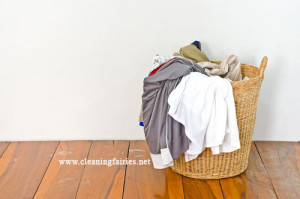-
Sorting Laundry: A Little Meticulousness Goes a Long Way
When it comes to household chores, sorting laundry is about as tedious as they come. But if you care at all about preserving the appearance and quality of your clothes, it’s a chore you shouldn’t neglect. What many people don’t realize, however, is that sorting by color is only the start. It’s not enough to simply separate lights from darks – sorting by fabric type and weight is important as well. Among the myriad of fabrics, meticulous care instructions, and intimidating warning labels, sorting your laundry can go from merely time-consuming to downright confusing. As you attempt to distinguish between delicate knits and synthetic fibers, heavy cotton and light cotton, follow these steps to simplify your sorting process and get your clothes looking cleaner than ever.
Read the care labels to make sure garments can be machine-washed. Anything labeled “wash separately” or “hand wash” should be placed into separate piles.
Sort by color. Separate the lights from the darks. Whites, pastels, light gray, and white background prints go in the ‘lights’ pile; anything black, red, navy, brown, or dark gray go in the ‘darks’ pile.
Sort by fabric type. Different types of fabric require the use of different water temperatures and should therefore be washed separately. Use hot water for sheets and towels, cold water for delicate fabrics, and warm water for cotton, blends, and washable woolens or knits.
Sort by fabric weight. To ensure that your laundry dries evenly, put items of similar fabric weight into separate loads.
Separate heavily soiled garments from lightly soiled garments. Clothes that are really dirty require hot water to get them clean again, but for the average wash of moderately soiled laundry, warm water is more than sufficient. For lightly soiled clothing, on the other hand, you can simply use cold water. Not only does it save energy, it also prevents fading and reduces the possibility of setting wrinkles setting into the fabric.
Separate fabrics that shed lint from fabrics that attract lint. Terry cloth, for example, shouldn’t go into the wash with corduroy or synthetics. Turn these fabrics inside out so they don’t pick up any lint in the wash.
Wash delicate separately. Wash lingerie and other delicate fabrics by hand, or put them into a mesh bag (or a pillowcase) and run them through the wash on a gentle cycle.



Please let us know your thoughts!
Comment Cancel